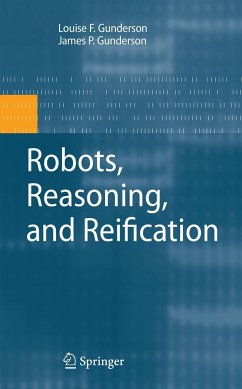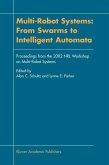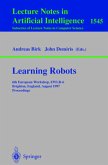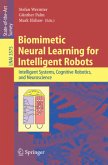This book focuses on a critical obstacle that is preventing the development of intelligent, autonomous robots: the gap between the ability to reason about the world and the ability to sense the world and translate that sensory data into a symbolic model.
This work was created from the statement "But, all you have to do is make the robot recognize its surroundings. Salamanders do it, and how complex are they?" Little did we know what a long path was started with those simple words. This book is a small step on that path, which we hope leads to robots that can serve as true and useful assistants to humans. At the least, we hope for some help with the tasks that are described by the 3 d____ words (dull, dirty, or dangerous). Fair warning, this work is a synthesis of ideas from many disciplines. As such, we have depended on the work of many other researchers and philosophers. The heart of this work, the lens model, comes from the work of Egon Brunswik. Even though he died in the 1950's, his ideas are still strong enough to resonate into the 2000's and into our robot. Another researcher who's work has greatly in?uenced this work is Walter Freeman, Professor Emeritus of Neurobiology at the University of California, Berkeley. We have relied heavily on his work on preafference and attention to guide the development of our robot. In addition, we have used research from a myriad of different ?elds. Our huge thanks to all the researchers who's work we used to synthesize this new theory. Denver, CO Louise F. Gunderson July 2008 James P.
This work was created from the statement "But, all you have to do is make the robot recognize its surroundings. Salamanders do it, and how complex are they?" Little did we know what a long path was started with those simple words. This book is a small step on that path, which we hope leads to robots that can serve as true and useful assistants to humans. At the least, we hope for some help with the tasks that are described by the 3 d____ words (dull, dirty, or dangerous). Fair warning, this work is a synthesis of ideas from many disciplines. As such, we have depended on the work of many other researchers and philosophers. The heart of this work, the lens model, comes from the work of Egon Brunswik. Even though he died in the 1950's, his ideas are still strong enough to resonate into the 2000's and into our robot. Another researcher who's work has greatly in?uenced this work is Walter Freeman, Professor Emeritus of Neurobiology at the University of California, Berkeley. We have relied heavily on his work on preafference and attention to guide the development of our robot. In addition, we have used research from a myriad of different ?elds. Our huge thanks to all the researchers who's work we used to synthesize this new theory. Denver, CO Louise F. Gunderson July 2008 James P.








